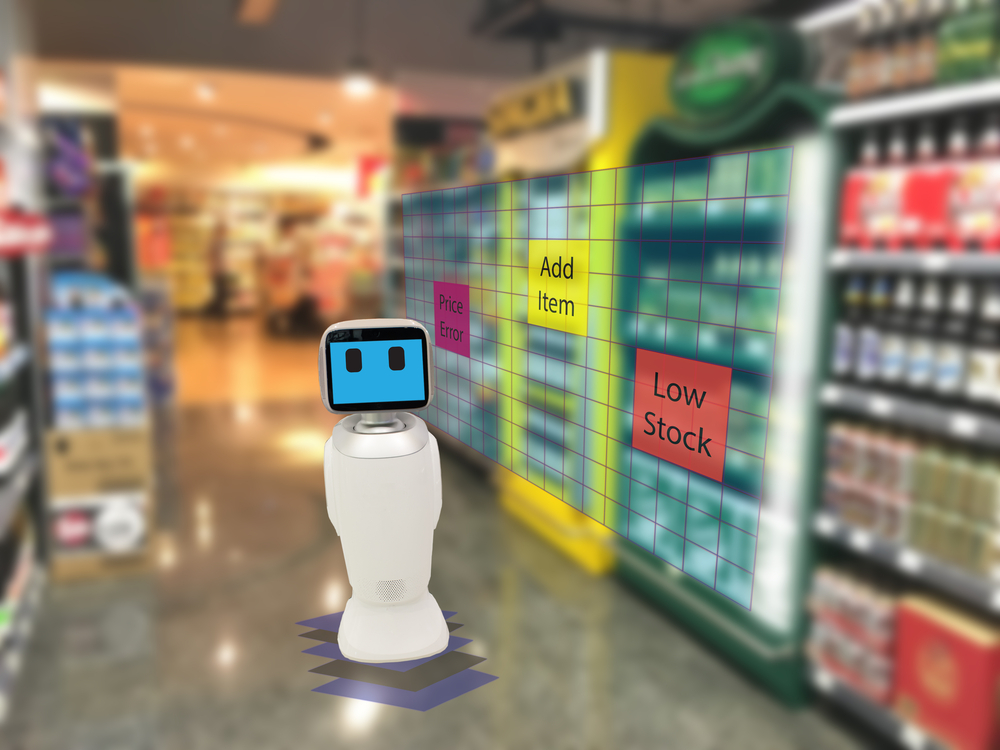Retail is one of the fastest growing industries. According to a report by eMarketer, the retail industry is expected to reach a mark of $27.7 trillion in global sales by 2020 and along with the growing opportunities. Apart from deploying technologies to increase the customer traffic and experience, retailers have started investing in Robotic Process Automation (RPA) to speed-up certain repetitive tasks.
These bots effortlessly carryout mundane and repetitive tasks within seconds. Deploying human workforce to carry out these tasks can be expensive and the accuracy of the result is compromised. RPA has been increasingly replacing humans in various sectors like Healthcare, Finance, and Insurance etc.
Let’s take a look at some ways in which the retail industry can make use of RPA.
Automated Inventory Management
Inventory management is the most essential process in a retail business, be it online or physical store. It’s always good to stock up and ensure a customer never leaves the store disappointed that they couldn’t purchase what they wanted. Well, to err is human! There’s a high possibility that the store employee may forget to update the inventory details. During sales season it’s common that they forget to follow up with the supplier for stocks and results in delayed delivery.
Robotic process automation can help resolve this issue seamlessly. Working 24/7/365, bots can constantly monitor the inventory. They never sleep; never get tired and their machine memory is always storing the accurate information about the latest inventory and shipping details. When the stock available is below the threshold, the bots automatically reorder stock with the vendor. With RPA in the procurement process, various stages of the process from purchase request to purchase order can be completed within a short span of time. They have the ability to predict the future requirement based on the past trends and sales. This improves the procurement process, reduce costs and also wastage.
Automated Order Processing & Updating
Any customer-facing process has to be carried out accurately without any issues. Any trouble created during the order processing or the payment stage, it’s most likely that the user will leave the site. Once the products have been added to the cart and the user proceeds to place the order, the bots can automatically key-in some basic details of the user. This will save the user the pain of re-entering the data once again during the purchase.
After ordering a product, a customer would want to be updated regularly on the shipping and delivery status. RPA plays a key role in communicating the status to the customer. Once the order is placed, a confirmation mail can be sent. The order status along with the current shipping status can be sent to the customers. The manual dependency to send these live updates and alerts is a mind-numbing task and can be easily achieved with the help of bots. Timely updates of the order provide customer satisfaction which also improves the customer loyalty. RPA can also be widely used in physical stores to send offer/sale notifications to customers. This once again will increase customer footfall and also help in cross-selling.
Marketing and Consumer Behavior Analytics
Millennial shoppers go through multiple channels on their path to a purchase. Retailers have been struggling for many years to gain the ability to analyze large volumes of data from siloed systems, collate them and gain valuable customer insights. Employing human workforce to carry out this tedious task is not only mind-numbing but also expensive and the results may not be accurate. With RPA integrated to Analytical tools, large chunks of data can be effortlessly analyzed based on which consumer’s current preferences can be identified and future preferences can be predicted. Such valuable results can be achieved without the need to duplicate data input or analysis. By collecting data from multiple sources like sales, inventory and customer’s information across different channels, retailers can easily run omnichannel campaigns to drive traffic and increase the store footfall. With such a high level of perfection, personalization can be offered effortlessly.
These capabilities of RPA can help retailers leverage advanced analytical tools to predict customer buying patterns. Based on the data collected from multiple sources, retailers can now detect buying patterns and predict customer preferences based on which personalized offers can be given. This will improve the overall customer experience, making them feel like they have a personal shopper to help them guide through the store (both in physical & online stores). For example, retailers can track a customer’s digital shopping journey and provide offers in-store, based on their interests.
It is thus evident that the benefits of Robotic Process Automation extend beyond basic cost reduction and increased productivity and can be used to address a variety of critical industry-specific issues. RPA thus helps retailers improve customer, employee and supplier satisfaction. Many progressive retailers are embracing this futuristic technology to raise their game. What’s your plan?
- Empower Commerce with Oracle Retail Omnichannel Suite - February 20, 2019
- Top 9 necessary optimizations for your Ecommerce UX Audit – Part 3 - November 28, 2018
- Top 9 necessary optimizations for your Ecommerce UX Audit – Part 2 - October 29, 2018











Comments